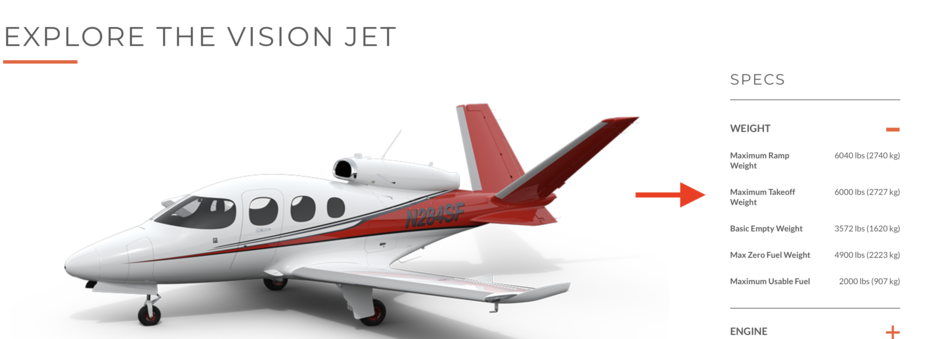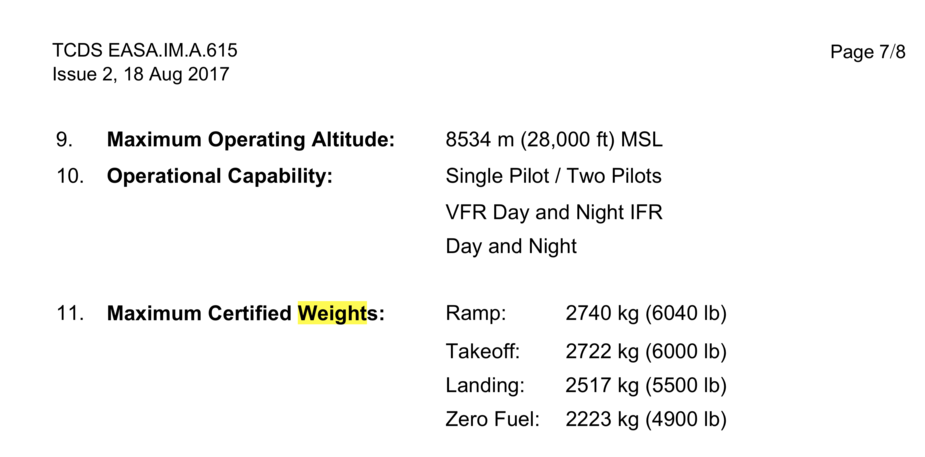Some details from the price list.
Weight with elite package 1678kg
+ cargo extend 4.1kg
+ potty 7kg
+ easa diversity transponder 3kg
+ DME 2.5kg
= 1694.6kg with all available options
MTOM 2722kg
Fuel 895kg
Full fuel payload with all options 132kg or 139kg if you prefer to keep it :-)
This is news for me, as I was previously expecting 220kg.
AeroPlus wrote:
I am not saying that I do not want to do the theory. I understood from Aero Poznan that it is 4 days of presenting on a beamer one slide after the other information about the aircraft, its systems and engine, principles of the jet engine, etc. What I would prefer is to study this at home and then to review them with the instructor and do an exam either in-house or online. We all have our own style of learning and I can’t imagine enjoying myself 4 days in a row going through hundreds of slides.
When you do theory training at FlightSafety or CAE Simuflite as well as the slides and the talk you get interactive training on a screen in front of you where you can actually “operate” switches and buttons and see the effects. The teacher can add faults so you can see how faults look and see how the situation changes when you do things. If it’s just a guy reading out a powerpoint I would not think it’s as useful.
AdamFrisch wrote:
But that doesn’t mean Cirrus hasn’t done a great job and captured the hearts and minds of the intended market. And that’s all they need to do – that’s how you succeed in aviation.
You’ve just recaped the whole story of Cirrus’ success in two sentences.
I fully agree. And for their target market which is the SR22 upgraders, the Jet will do fine as they don’t expect anything else. It is a step up between a Turbo SEP and a full scale biz jet. So those who have spent the cash on upgrading each “G” version and have the cash to buy the Jet will likely do it and like it just fine. This may / will change after a while if their profile changes or their payload requirements. For me, the absymal payload would be a deterrent more than speed and range.
Obviously, a TBM is a much more capable airplane. But it’s got a prop and some people don’t like that, even if the airplane is much superior. I’ve seen this for instance with the Saab 2000 which was and is a VERY capable turbo prop airliner and the CRJ. Passengers hated the Saab for its props (even though the cabin was more comfortable, it was not significantly louder and it did not loose any time on any 500-700NM routes vs a comparable jet) and loved the CRJ or even the Embraer 135, which needed a shoe horn to “dress”. It also at the time was very sophisticated in terms of avionics, much better than the CRJ which had a different version of the same avionic. But it failed anyway as people don’t like props. Heaven knows how the Dash 8 made it that big, it is much worse to fly in and a sight slower too.
Appart from taking full load and passengers, Dash 8 sucess is probably runway surface, length and cross-wind limit requirements?
As far as I can see/hear, they seem to operate at LCY when CRJs don’t dare !
Ibra wrote:
Appart from taking full load and passengers, Dash 8 sucess is probably runway surface, length and cross-wind limit requirements?
Sure. In comparison to the Saab 2000 however, I reckon the Saab was even better. It certainly beat the original version in terms of payload and speed, but it also was quite a performer. It was after all constructed for London City and Lugano, both of which need massive performance to operate with max payload. And yes, clearly the CRJ can not operate there, but of course there are jets who can, such as the A319 and of course the BAE 146/RJ70/100 in all incarnations…
But this is getting too much off topic. Or is it? Because in more than one way this is the same discussion we have with the SF50. It can not do a lot of things “better” planes can, e.g. short runways, grass runways, range, yet people decide for it. So what we can learn is that the decision on what to buy is not one of ratio but of the heart… and that unfortunately often goes also for airliners….
By the way, do they have different pounds in the US compared to Europe?
Cirrus website:

Google:

EASA TCDS:

ReBtw: ‘Pounds’ is not a well defined quantity and can range from SI 350 grams to SI 500 grams, see i.e for an overview the nice wikipedia entry on masses https://en.m.wikipedia.org/wiki/Pound_(mass) .
I used this variation to feel better every other Monday
dejwu wrote:
ReBtw: ‘Pounds’ is not a well defined quantity and can range from SI 350 grams to SI 500 grams, see i.e for an overview the nice wikipedia entry on masses https://en.m.wikipedia.org/wiki/Pound_(mass) .
Thanks, but I couldn’t find a pound that would fit the conversion Cirrus used. I guess they used marketing pounds.
I have never heard of a weight “pound” different from the standard one i.e. very close to 2.2lb=1kg. Anything else, in today’s world, especially aviation, is a typo (or worse).